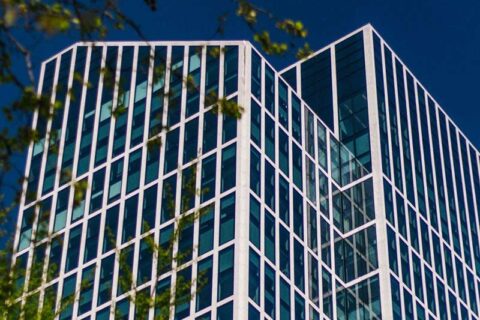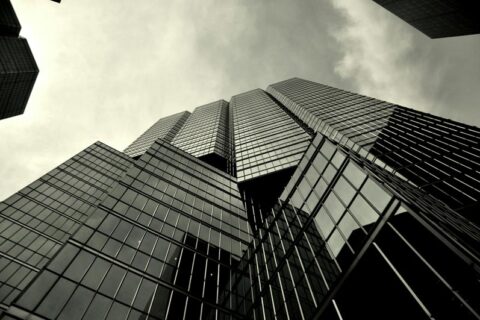How to Avoid Costly Mistakes in Commercial Glass Installation for Large Buildings

When it comes to commercial glass installation in large buildings, even a minor oversight can snowball into a costly and time-consuming mess. That is why, from structural miscalculations to improper sealing or coordination failures, the margin for error is wafer-thin and the stakes are sky-high. So, whether you’re outfitting a sleek office tower or a sprawling mixed-use complex, avoiding mistakes isn’t just a goal; it’s a necessity.
In this article, we’ll break down the most common pitfalls in large-scale glass projects and show you how to sidestep them with smart planning, expert input, and the right team on your side.
1. Understand the Unique Demands of High-Rise Installations
Commercial glass isn’t just about aesthetics; it’s a structural component that must withstand wind, temperature shifts, and even seismic activity. Unlike residential projects, glass installation in high-rise buildings requires precision engineering.
For example, using the wrong glass thickness can lead to deflection (bending under pressure), reducing both performance and lifespan. A costly mistake like this often stems from cutting corners in material selection. Thus, it’s always helpful to consult structural engineers and glass specialists to match specifications with building demands.
2. Choose the Right Glass Type for Performance and Safety
Choosing glass for a commercial building isn’t like picking a window for your home. The wrong selection can turn minor issues, like heat buildup or noise, into major operational headaches. High-rises, in particular, demand glass that performs under pressure “literally.”
Take tempered glass, for example. It’s up to five times stronger than standard glass, making it ideal for high-traffic facades. However, if it’s not heat-treated correctly, microscopic flaws can cause spontaneous breakage. On the other hand, laminated glass acts like a safety net. Even if it’s shattered, the interlayer holds shards in place. Yet, if used unnecessarily in low-risk areas, it inflates costs without adding value.
Then there’s low-emissivity (Low-E) glass, a game-changer for energy efficiency. However, if the coating is too heavy, it can distort natural light, leaving interiors feeling dim and artificial. The key? Work with suppliers who test glass under real-world conditions — wind loads, UV exposure, and thermal stress — before finalizing specs.
Pro Tip: For high-rises in hurricane-prone zones, consider impact-resistant laminated glass with a polyvinyl butyral (PVB) interlayer. It’s pricier upfront but prevents catastrophic failures during storms.
3. Ensure Proper Structural Support and Sealing
Glass panels are only as strong as what holds them. Weak framing or poor sealing leads to leaks, cracks, and even catastrophic failures.
Think of it like building a car windshield. If the rubber gasket fails, water seeps in and weakens adhesion over time. Similarly, in high-rise buildings, inadequate support systems can cause glass to shift under wind loads, risking cracks or detachment.
Always:
- Use high-quality framing materials (aluminum, steel, or reinforced composites).
- Apply weather-resistant sealants to prevent moisture damage.
- Conduct load testing before full installation.
4. Prioritize Precision in Measurements and Installation
A millimeter of misalignment in glass installation in high-rise buildings can escalate into gaps, stress points, or uneven weight distribution.
Imagine assembling a giant puzzle where every piece must fit perfectly. Even if one panel is slightly off, the entire system is compromised. That’s why laser-guided measurements and experienced installers are non-negotiable to avoid costly mistakes.
Pro tip: Always double-check blueprints and conduct mock installations for complex designs.
5. Don’t Overlook Thermal and Acoustic Performance
Glass isn’t just a barrier; it’s a climate control system. Poor thermal insulation leads to skyrocketing energy bills, while inadequate soundproofing disrupts occupants.
To illustrate, a building with single-pane glass in a noisy urban area will face complaints and higher HVAC costs. So, what can you do instead? Opt for double-glazed or insulated glass units (IGUs) to balance performance and comfort.
6. Invest in Quality Labor, Not Just Materials
Even the best glass can fail if installed incorrectly. Thus, hiring inexperienced contractors to save money often backfires with rework, delays, and safety violations.
What helps here is to look for teams with:
- Certifications in commercial glass installation.
- Experience with high-rise projects.
- Strong references from past clients.
Final Thought
The biggest costly mistake in commercial glass installation isn’t just choosing the wrong materials; it’s rushing the process. Thus, if you want a durable, efficient, and visually stunning result, focus on precision, performance, and expert execution.
Whether it’s a 10-story office or a 50-story landmark, the right approach saves time, money, and headaches. After all, in glass installation for high-rise buildings, there’s no room for error but only perfection.
Cut costs, not corners, and avoid the pitfalls before they cost you by partnering with Glaziers Consulting. Our team delivers expert insight, precise planning, and flawless execution, so your commercial glass installation stays on time, on budget, and built to last. Reach out today, and let’s get your project off to a solid start.

